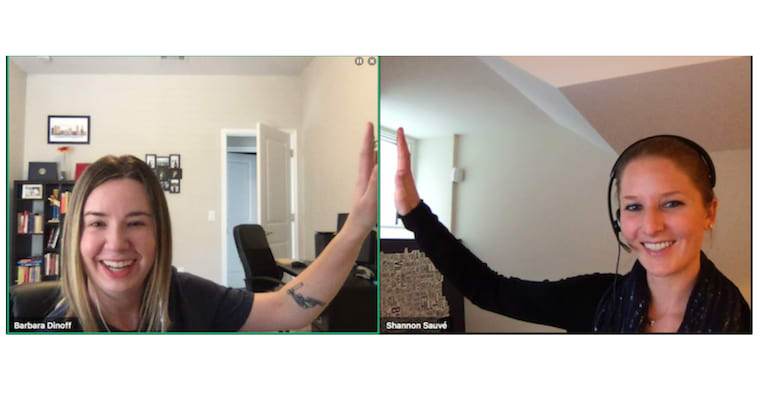In here you have two aspects. First, you need to handle;
• The social side of things to meet peoples' need for human interaction and bonding, and
• Then there's the practical side of things where the goal is to get things done.
The Practical Side of Communication
Alright, let’s change the focus criteria from goal to type of communication. You have instant and non-instant communication, and each one has its merit.
What many consider a downside of remote teams is the fact that instant communication is vastly reduced. I can no longer go to someone's desk and start talking to them because their right there next to you.
But what many see as a downside, studies see as an upside. No more interruptions. While all the casual talk might seem innocent, they can be very damaging to productivity.
Some tasks, if not most, require complete focus if they are to be dealt with fast and without errors. Having a colleague come by your desk and ask you something... or even worse, a manager that you can't ignore, can easily make you lose focus, and it can take up to 15 minutes to get back on track.
Have 4 such moments throughout the day, and you have a minimum of 1 hour in lost time.
But getting back to types of communication. As we were saying, you have instant and non-instant. But an even more relevant approach would be if that communication is scheduled or not because the more you schedule, the less time you waste.
Look, I'm a big advocate of written and non-instant communication for multiple reasons;
• You can easily come back to it in case you didn't fully understand something without the need to interrupt the other person involved.
• It's clearer and far less likely to cause misunderstandings. Where you have pointless conversations about who said what, what everyone understood, and who's to blame.
• It allows everyone involved to finish the things they are focused on... and join the conversation whenever they take a break or have reached a milestone.
• It doesn't require everyone to sync their schedule and rearrange their day for a simple chat... that many times could have been avoided or solved through a quick series of emails in the first place.
• And odds are that the bigger your organization is, the more of these meetings you join where you simply ask yourself why am I even here? I have things to do.
The only downside to written communication in this form is that it's not instant; however, I think all the advantages outweigh this single downside.
And before proceeding, I want to make something clear. You can disagree with me and say that in your business instant communication is essential, and that can be true.
What I want to emphasize on is for you to pay attention on how effective your current communication processes are. By answering these questions;
• Is your need for instant replies an authentic one, or is it just an inefficient management style?
• Would receiving a reply within 15 or 30 minutes be a problem if the upside is that your team has increased productivity?
• Is that daily 30-minute meeting really necessary, or can it be a 10 minute with just 3 people being there instead of 8?
And these are all questions that you need to ask yourself when setting up your systems to be an effective manager.
The Social Side of Communication

Next, I'd like to take a closer look at the social side of communication. Besides getting things done, you obviously want people to feel as if they are a part of something.
Many studies show that most employees quit because they don't have a sense of accomplishment. They don't feel their work is contributing to anything.
At first, that reduces motivation, job satisfaction, and in the long run leads to quitting. That's why you need to establish a virtual water cooler.
You need to create an artificial system where people can relax, say a joke, share something interesting that they found, and just zone out from work if they need a break. If, let's say, you use Slack as your communication tool, I recommend you create a channel exclusively for such things. And you mustn't ignore the power a good joke at the right time can have.
It can take the entire team from low morale and almost burnout to a boost in motivation, bonding, and can make a long strenuous day more tolerable.
In order to deliver great work consistently, you need to zone out from time to time. Or as Alan Watts finely puts it, muddy water is best cleared by leaving it alone.







Top comments (0)